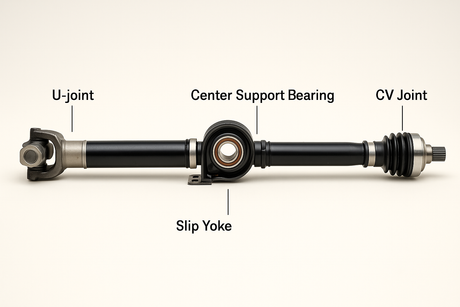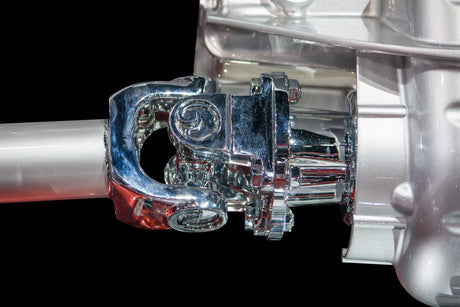Maintaining your vehicle’s performance hinges on numerous factors, but one often overlooked aspect is the balancing of your driveshaft. This critical component of the drivetrain is responsible for transmitting torque from the engine to the wheels. In this blog post, we’ll delve into the importance of driveshaft balancing, how to identify imbalance issues, and tips for maintaining a well-balanced driveshaft.
Why Driveshaft Balancing Matters
1. Vibration Reduction An unbalanced driveshaft can result in noticeable vibrations while driving, particularly at higher speeds. These vibrations are not just a minor nuisance—they can lead to premature wear and tear on pivotal drivetrain components. Properly balancing the driveshaft mitigates these issues and ensures a smooth and comfortable ride.
2. Preventing Damage Imbalance puts additional strain on universal joints (U-joints), bearings, and seals. Over time, this strain can result in part failures and costly repairs. Correctly balanced driveshafts distribute forces evenly, reducing the risk of damage and extending the lifespan of these critical parts.
3. Enhancing Vehicle Performance Vehicles designed for high performance, such as sports cars or off-road vehicles, particularly benefit from a balanced driveshaft. It ensures maximum power transfer from the engine to the wheels, optimizing vehicle performance and efficiency.
4. Improving Fuel Efficiency By reducing unnecessary vibrations and mechanical resistance, a balanced driveshaft contributes to better fuel efficiency. This makes for an eco-friendly and cost-effective consideration, allowing you to get more mileage out of every gallon.
Signs Your Driveshaft Needs Balancing
- Excessive Vibrations: If you feel unusual vibrations, especially at higher speeds, it’s a clear indicator that your driveshaft may be imbalanced.
- Clunking Noises: Unusual noises, particularly when accelerating or decelerating, can point to driveshaft issues.
- Wear on U-Joints: Unusual wear patterns on U-joints can indicate an imbalanced driveshaft.
Tips for Maintaining a Balanced Driveshaft
1. Regular Inspections Routine inspections are key to detecting potential issues early. Include driveshaft checks in your regular car maintenance schedule to ensure overall health and balance.
2. Professional Balancing Services If you suspect imbalance issues, consult a professional. Driveshaft balancing requires specialized equipment, and experts can ensure the job is done accurately.
3. Proper Installation Ensure driveshaft components are installed correctly to avoid misalignment, which can lead to imbalance.
4. Quality Components Use high-quality, OEM driveshaft parts. Investing in premium components ensures better reliability and longevity.
A balanced driveshaft is essential for optimal vehicle performance and longevity. Whether you’re a daily commuter or a performance enthusiast, paying attention to your driveshaft’s balance can save you from undesirable vibrations, costly repairs, and poor fuel efficiency. Regular maintenance and professional balancing services are crucial to enjoying a smoother, safer, and more efficient ride.






